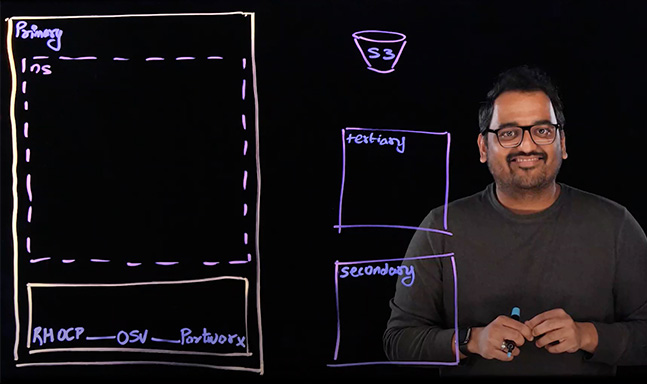
Select
Why Modern Virtualization?
While cloud-native development continues to grow, many enterprises still rely on a number of virtual machine or VM-based applications or on databases that must live on top of VMs. Today, these companies are having to spend significant money to maintain both their virtual machine infrastructure alongside their Kubernetes infrastructure.
Red Hat OpenShift Virtualization (OSV), based on the KubeVirt project, addresses this challenge by providing VM infrastructure within Kubernetes clusters. This means that organizations can easily run applications in VMs alongside applications in containers, taking advantage of a common user experience and allowing enterprises to rehost, refactor, redeploy or rebuild applications if and when they are ready as part of their app modernization efforts.
Customer Challenges with Traditional Virtualization
Unsustainable Cost Model
Changes to licensing and operating costs for traditional virtualization have dramatically increased the cost of maintaining a traditional app development platform
Investment Risk
Risk of decline in product support, engineering, and partner resources has introduced significant systemic risk to legacy app development
Lack of App Innovation
Significant technical debt and lack of interoperability between traditional and modern app development has slowed the innovation engine
Storage & Data Management: VMware vs. Portworx
| Benefit | VMware Capability | Portworx Capability |
|---|---|---|
| Data Availability | Shared Storage or vSAN FTT | Portworx Storage Cluster |
| Async Disaster Recovery | VMware Site Recovery Manager | Portworx AsyncDR |
| Sync Disaster Recovery | VMware Metro Storage Cluster | Portworx SyncDR |
| Encryption | Security Abstraction / Volume Encryption | Portworx Encryption |
| Data Protection | VM-aware Backups (Partner) | Container Aware Portworx Backup |
| Storage Performance | SIOC | Portworx Application I/O Control (Per PV or StorageClass) |
| Data Portability | Storage vMotion | Portworx Migrate |
| Capacity Management | Thin Provisioning | Thin Provisioning / AutoPilot |
Portworx Solution
Top Resources








